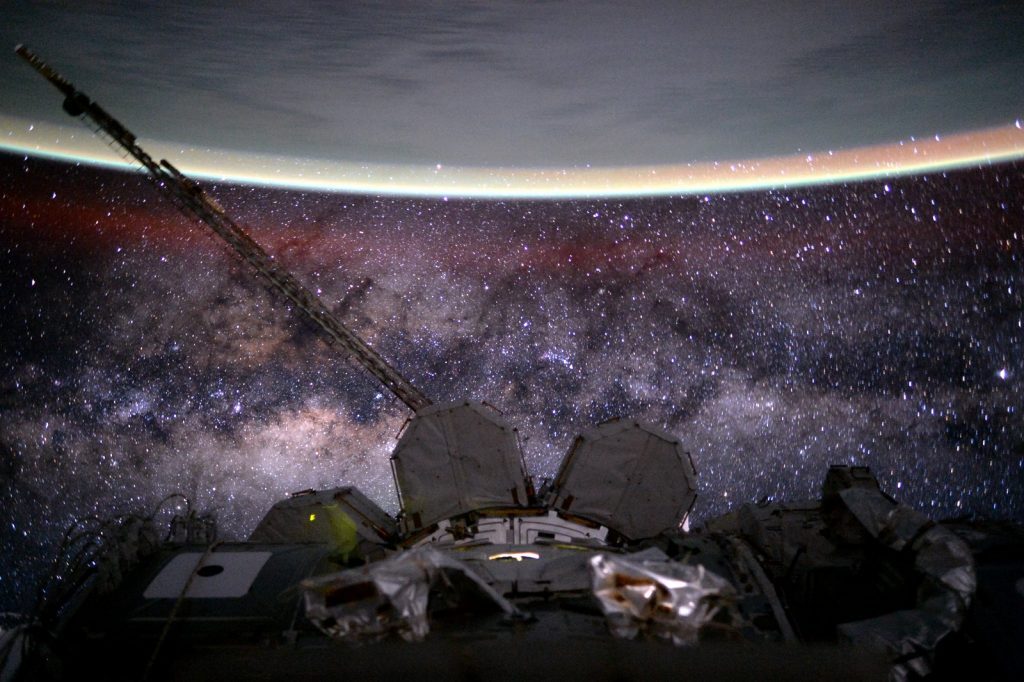7.02.2023
NASA’s Atmospheric Waves Experiment (AWE) has successfully completed its critical space environment tests. Planned for launch to the International Space Station, AWE will study gravity waves in Earth’s atmosphere to gain a deeper knowledge of the connections caused by climate systems throughout our atmosphere and between the atmosphere and space.
From its unique vantage point on the International Space Station, AWE will look directly down into Earth’s atmosphere to study how gravity waves travel through the upper atmosphere. Data collected by AWE will enable scientists to determine the physics and characteristics of atmospheric gravity waves and how terrestrial weather influences the ionosphere, which can affect communication with satellites.

Astronaut Scott Kelly captured this photo from the International Space Station on August 9, 2015, showing our galaxy and our home world posing together beyond the orbital outpost. The Milky Way stretches below the curve of Earth’s limb in the scene that also records a faint red band of airglow. Credit: NASA/Scott Kelly
The AWE mission is focused on understanding gravity waves in Earth’s atmosphere at altitudes between 50 and 500 kilometers, called the ionosphere-thermosphere-mesosphere system. Space weather in this region – the ionosphere in particular – can significantly disrupt space-based communication systems we rely on due to the high concentration of electrically charged particles there. By studying atmospheric gravity waves, scientists will understand more about how Earth’s weather influences upper atmospheric properties.
“AWE is a highly sensitive, precise science instrument designed to be fitted on the International Space Station and operate in the harsh space environment,” said Burt Lamborn, AWE project manager at Utah State University’s Space Dynamics Laboratory (SDL), where the tests were conducted. “To ensure that AWE will survive launch turbulence and operate as designed once in space, SDL put the instrument through its paces on the ground.”
The AWE instrument underwent electromagnetic interference/electromagnetic compatibility testing to ensure it does not produce or emit electromagnetic signals that could interfere with other equipment onboard the space station, and to verify that interference from the space station will not impair AWE’s ability to produce data. AWE was also subjected to vibration testing on a shaker table that simulated the predicted launch vibration that AWE will experience. During thermal vacuum testing, AWE experienced a simulated flight environment, including cycling between hot and cold temperature extremes. Engineers performed a full-system calibration to verify that the instrument meets mission requirements and to demonstrate its performance and limitations under operational conditions.
AWE is led by Michael Taylor at Utah State University in Logan, and it is managed by the Explorers Program Office at NASA’s Goddard Space Flight Center in Greenbelt, Maryland. Utah State University’s Space Dynamics Laboratory is building the AWE instrument and will provide the mission operations center.
Quelle: NASA

